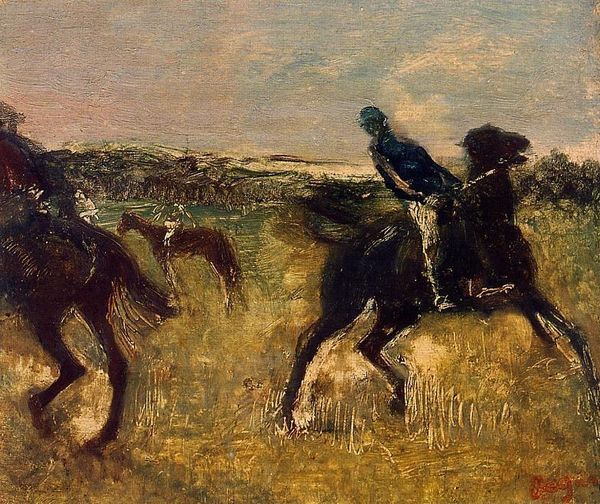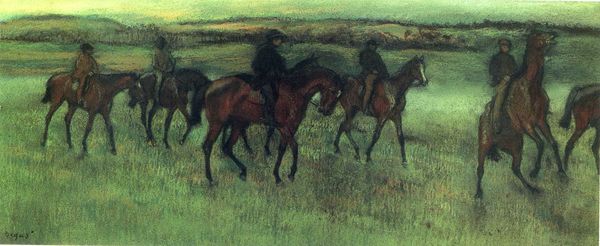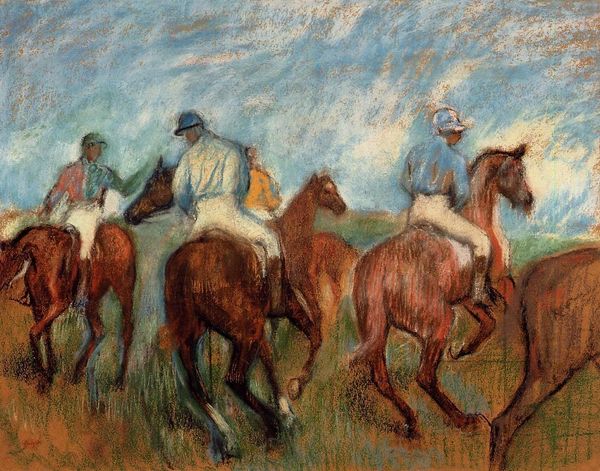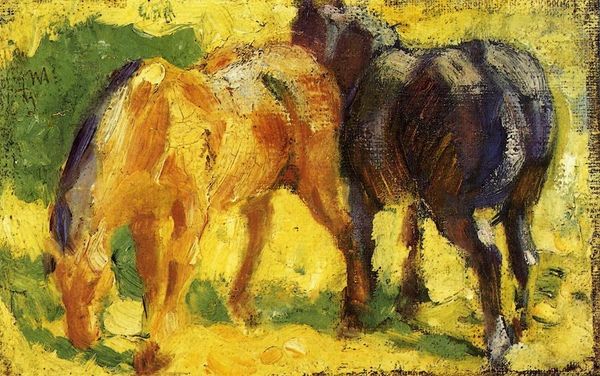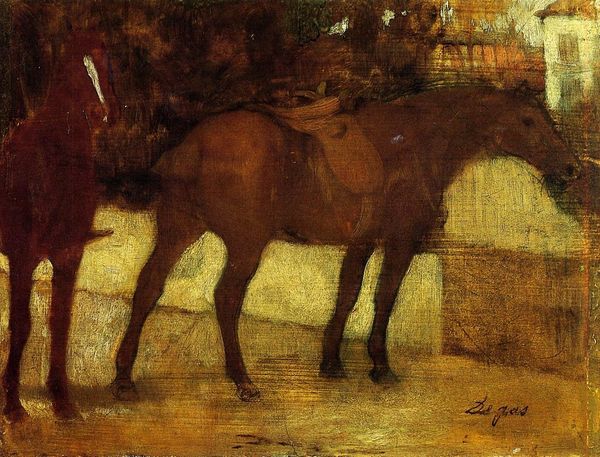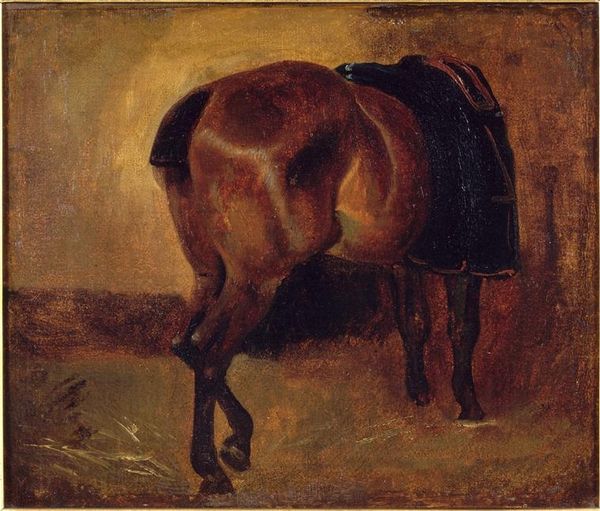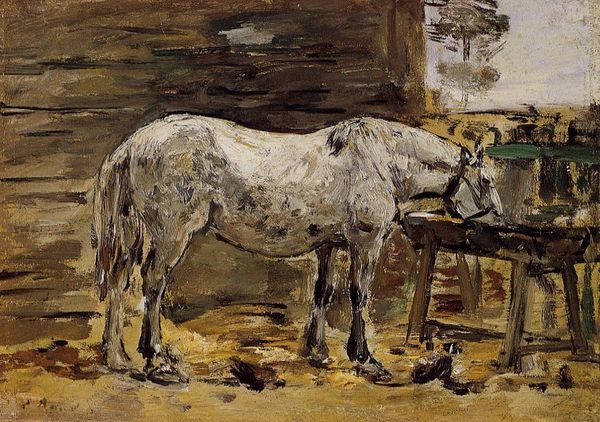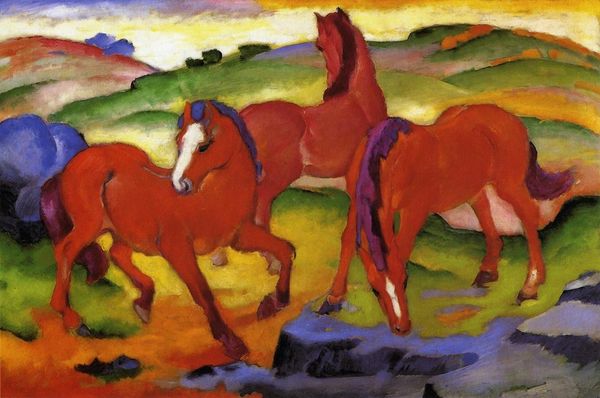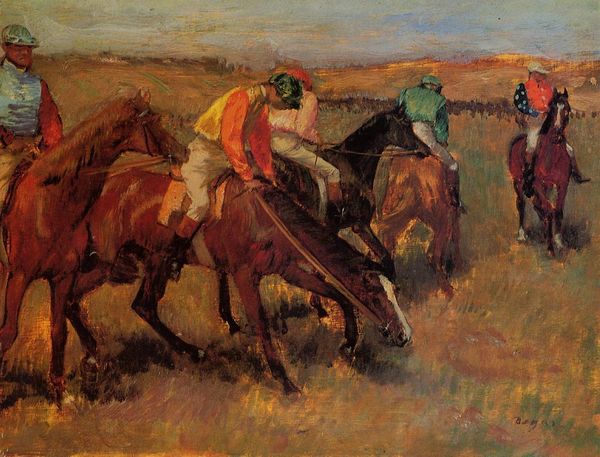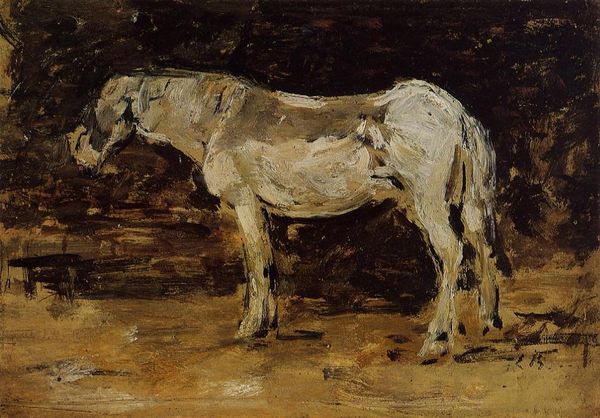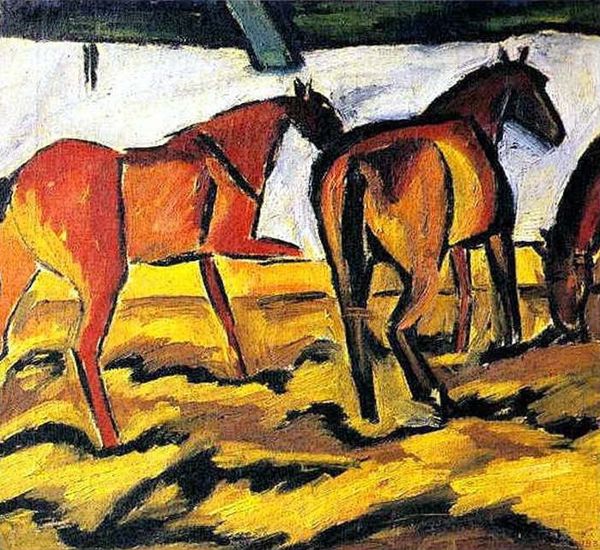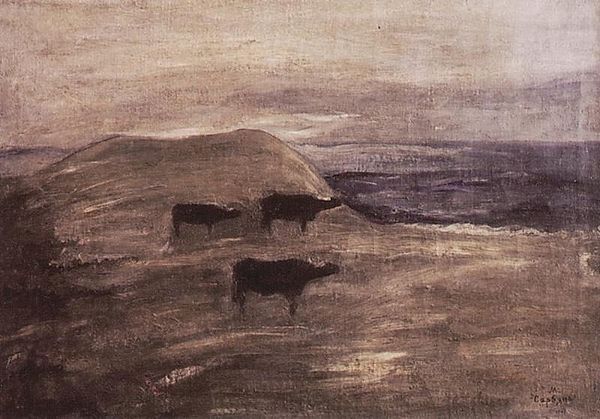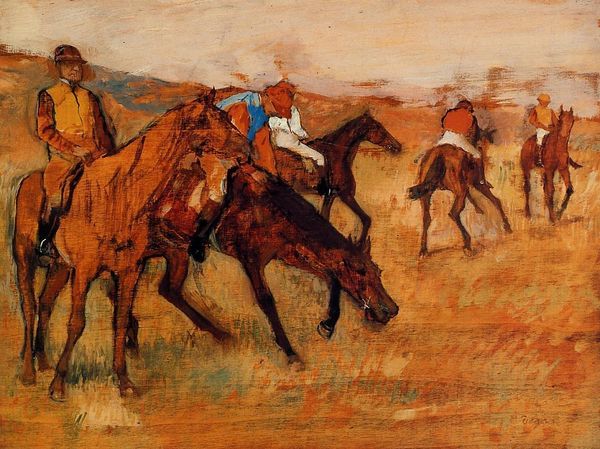
painting, oil-paint
#
painting
#
impressionism
#
oil-paint
#
landscape
#
figuration
#
oil painting
#
horse
Dimensions: 45.1 x 35.5 cm
Copyright: Public domain
Editor: This is "Two Horses in a Pasture," painted by Edgar Degas in 1871. It's an oil painting. The hazy scene and muted colors give it such a calm, serene feel. What stands out to you from a formal perspective? Curator: Note the horizon line; it dissects the picture plane with minimal deviation and sits relatively low. The texture of the canvas itself becomes an integral element. Editor: Interesting! I was focusing more on the figures. Curator: While representational forms are discernible, are they delineated with precision? Degas uses color, mass, and shadow instead. How do the figures and the landscape interact formally? Editor: They kind of blend, especially since they're both variations of muted greens and browns. The horses almost emerge from the pasture itself. It is like they are one. Curator: Precisely. This effect is heightened by the lack of sharp outlines. Light and shadow define form but in an ambiguous way. Look at how the application of paint on the top contrasts that on the bottom. Editor: It is much looser, especially in the sky area, which almost resembles a Rothko color field. What would you say is the dominant element here, then? Curator: I'd argue that the interplay of color and texture, overriding clear representational intent, constitutes the work's primary formal concern. Did you note that there's barely any contour? Editor: Right, no hard lines, everything is soft and diffused. It’s amazing how much a formal analysis can reveal about a piece. Curator: Absolutely, by examining these formal elements, we can decipher much about Degas’s visual language.
Comments
No comments
Be the first to comment and join the conversation on the ultimate creative platform.

